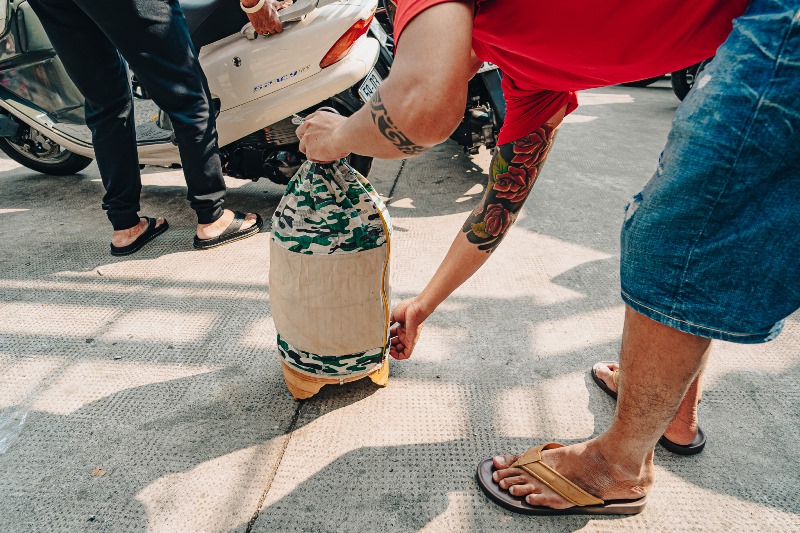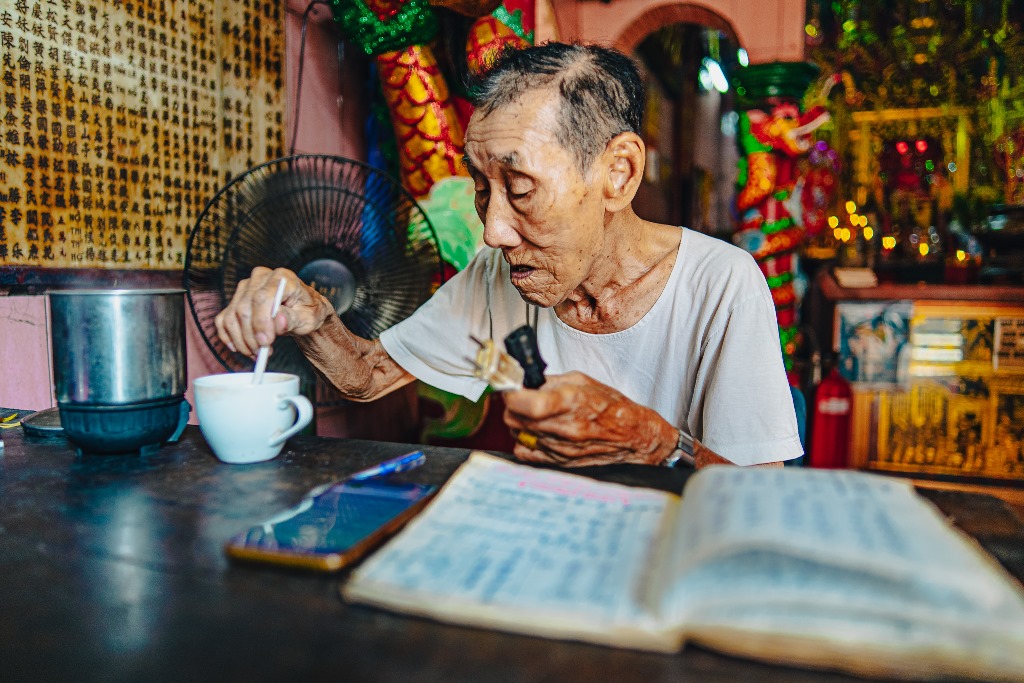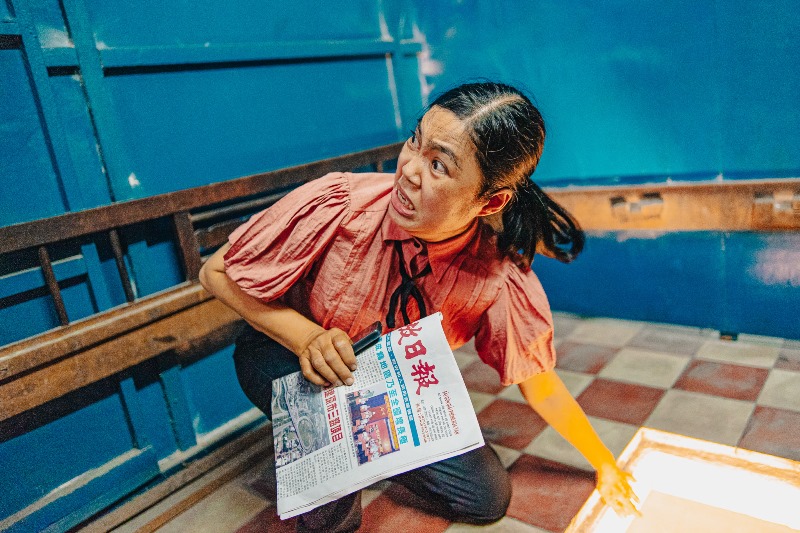Discovering the secrets of Saigon on this Khiri Signature experience
Saigon Unseen - a Khiri Signature Experience
Earlier this week I spent a couple of days working out of our Saigon office, and the team there suggested that I also spend a day trying out Saigon Unseen, Khiri’s signature experience in the city – a tour taking visitors off the beaten track and showing them some of the city’s lesser-known sights.
Now, a disclosure is needed here – I lived in Saigon from 2003 to 2012 and knew the city like the back of my hand! Could this Saigon Unseen tour really take me to places I didn’t already know? Let’s find out…
Tao Dan Park
First stop on our itinerary was one of Saigon’s few centrally located green spaces, Tao Dan Park. Located behind the Independence Palace, the park has recently been cut in size to make way for the city’s new metro system, but the remaining area is still popular as a morning exercise location and when we arrived it was busy with older folks keeping fit by dancing, tai chi, badminton, or simply walking briskly around the park.
I had visited this park before but as I wasn’t exactly an early riser during my Saigon years, I hadn’t witnessed the large range of fitness activities taking place, so this part of the itinerary definitely passed the ‘unseen’ test!



Bird Cafe
One of the casualties of the shrinking of Tao Dan Park was its famous Bird Cafe. Every morning bird fanciers from across the city would load up their cages onto their motorbikes and come to the cafe to give their birds some air, and chat to their peers about all things feathered. It was one of those truly unique sights that make Saigon such a special city.
With cafe’s old location now a construction site, the birdmen have moved across the street to a cafe which, with a keen entrepreneurial eye for a new revenue stream, has set up a dedicated area for them to hang their cages and park their bikes.
We joined the birdmen for a morning cup of what Vietnam does best – lethally strong coffee – and watched them tending to their feathered friends, chatting amongst themselves, and coming & going. It was very much a social club atmosphere with bird fanciers comparing pets, preparing food (including some particularly juicy-looking grasshoppers), and drinking huge quantities of coffee (this is why the Vietnamese seem to survive on so little sleep!).
The most fascinating part of the Bird Cafe for me was watching how the men (and the customers are exclusively male for some reason) transport their birds to & from the cafe. The cages are covered in cloths, then put inside large bags which are then strapped to the bike or, in some cases, carried as backpacks – some birdmen manage to carry 4-5 cages on their bikes at a time.
Unseen? Well, I’d been to the Bird Cafe at its former location but not the new one so let’s say this was a partial success.



Tin Hau Temple
At the northwest corner of the park, at the busy traffic intersection of Nguyen Thi Minh Kai and Cach Mang Thang 8 streets, lies one of central Saigon’s hidden gems, one I’d driven past countless times but never actually entered (so this too passes the ‘unseen’ test with flying colours) – the delightful Tin Hau Temple.
Most of the city’s best known Chinese temples are located in Cholon (aka Chinatown), but Tin Hau stands apart from the others. Built in 1874 it is dedicated to Thanh Mau, an important Chinese deity and a protector of seafarers – Chinese arrivals in Vietnam in the 19th century would often build temples in her honour to thank her for their safe passage and it is common to pray to her before or after taking a long journey.
Tin Hau is small, colourful and very friendly – the staff (the youngest of whom was 83) gave us a very warm welcome, posed for photos and told us about the temple’s history, and we watched their 89-year old accountant doing the temple’s books in perfect Chinese script. A fantastic experience and a very underrated one.


Breakfast
After nine years in Saigon I don’t think there’s anything you can teach me about Vietnamese food, but this morning’s breakfast was a pleasant surprise nonetheless.
Our planned breakfast of pho was scuppered when our chosen venue turned out to be closed, but I spotted a hu tieu joint nearby so we headed there instead and we weren’t disappointed – a truly delicious noodle soup with pork ribs, dumplings and shrimp, washed down with fresh lime juice. Further evidence that Vietnam is the breakfast king of Southeast Asia and whilst I’ve eaten hundreds of bowls of hu tieu over the years, I can honestly say that this was the best.
Monument to Thich Quang Duc
On 11 June 1963, Thich Quang Duc, a Buddhist monk from Hue, parked his 1956 Austin A95 on a Saigon street and, accompanied by 350 fellow monks & nuns, poured petrol over himself and lit a match, burning himself to death in protest against the suppression of Buddhism by the South Vietnamese government. The pictures – taken by photographer Malcolm Browne – went global and have since achieved iconic status (the rock fans amongst you may well know it as the cover art of Rage Against the Machine’s 1992 debut album).
Quang Duc is now seen as an heroic martyr, partly for defending Vietnam’s national religion but also for protesting against the Southern Vietnamese regime, and in 2010 the country’s Communist government erected a memorial to him at the site of his protest. The memorial sits in a small, quiet park and consists of a statue of Duc in flames. Behind him is a frieze depicting the moment of his suicide. It’s both a moving and rousing monument, created in the socialist realism style, and although I was fully aware of Duc’s story and had previously seen his car (which is now on display back in Hue) I had no idea there was a monument to him in Saigon, so this one was definitely, 100% unseen!


Secret War Bunkers
During the Vietnam War, a lot of guerrilla activity happened underground – most visitors to Saigon will go to the famous Cu Chi Tunnels for example. But whilst they’re the most famous underground wartime attraction, they’re by no means alone. During the war Saigon hid many secret underground bunkers used by Communist rebels and several of them are now open to visitors.
The Saigon Unseen tour took us to two of them. The first, located in Cholon, housed a Chinese communist newspaper. Ostensibly the house of a young married couple (incidentally the couple who posed as the newlyweds in question later fell in love and actually became a real couple – awwwww) it hid typewriters and a printing press in the basement where journalists toiled in sweaty, damp, mosquito-infested conditions to produce a propaganda newspaper designed to rouse the city’s Chinese population to rebellion against the South Vietnamese government.
Today it’s open to visitors and whilst it’s small and there isn’t a huge amount to see, it’s worth a visit for the sheer over-the-top charisma of resident guide Miss Thanh, who does a great job of bringing the bunker to life in highly enthusiastic fashion!



Our second bunker visit took us to the former house of politician Tran Van Lai. During the late 60s, even unbeknownst to the family who lived with him, he constructed a secret bunker underneath the house to serve as a store for weapons which would later be used during the 1968 Tet Offensive. He used an old Citroen van to transport the dirt from the excavation out by night, and used the same van to bring in weapons including guns, explosives, rocket launchers and grenades.
The bunker can now be visited and we spent a fascinating half hour there. Weapons are still displayed in the bunker, whilst upstairs is a small shrine to Ho Chi Minh and Lai’s old van is housed in the coffee shop next door, along with some beautiful retro furnishings. Unseen? Totally. I’d visited other bunkers in the city before but both the weapons and press bunkers were totally new to me.
Following the bunker visits and some lunch, our day ended at the increasingly popular coffee apartment building on Nguyen Hue, an old 60s apartment building that now houses a huge array of cafes, restaurants and bars, most of them in a retro style that matches the architecture of the building. Another unseen location for me, making the tour pretty much a clean sweep of new experiences, even for a seasoned Saigon veteran like me!
Tim Russell joined the Khiri Core team in 2022, bringing decades of experience in the tourism industry into his role as Group Marketing Manager. Before moving to Bangkok in 2012 – where he now lives with his wife and their three rescue dogs – Tim spent almost ten years in Vietnam. When he is not overseeing Khiri’s marketing efforts, Tim can be found indulging in his passions for photography, live music, and street food.

